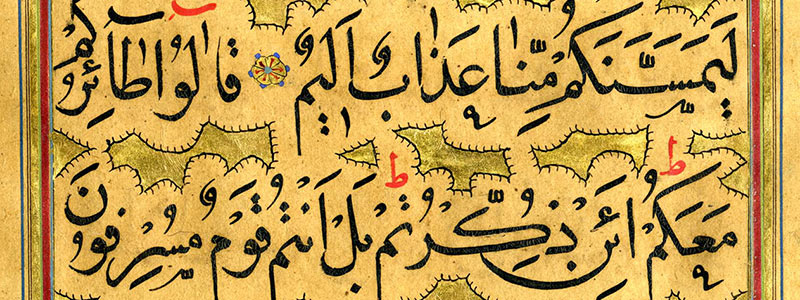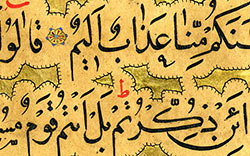Zayno'l-‘Ābedin Esfahāni stands as one of the most eminent calligraphers of the Naskh script in Iran. Many surmise that he was born in Isfahan around 1773 CE. He began practicing calligraphy under Āqā Mahmud and it is clear that his work benefited from the study of works by prior master calligraphers, especially Ahmad Neyrizi and his own contemporaries such as ‘Abdo’llāh ‘Āshur and Abdo’l-‘Ali Khorāsāni. Gradually, he came to dominate the field of Naskh calligraphy. He entered the Qājār court during the reign of Fath-‘Ali Shāh (r. 1797- 1834) and in his signatures referred to this royal connection with the title “Soltāni.” During the subsequent reign of Nāser-al-Din Shāh (r. 1848-1896), he was given the honorific title “the Noblest of Scribes” (ashraf al-kottāb). Many collections of his extant works contain references to his having lived for over a century and it is primarily due to this long life that we have so many precious examples of his work. Zayno'l-‘Ābedin eventually died in 1879 CE in his birthplace.
The printing press was introduced in Iran in Zayno'l-‘Ābedin’s lifetime and because it gradually began to replace the art of writing manuscripts, Zayno'l-‘Ābedin can be considered the last of the great masters of Iranian Naskh in the past two centuries.




